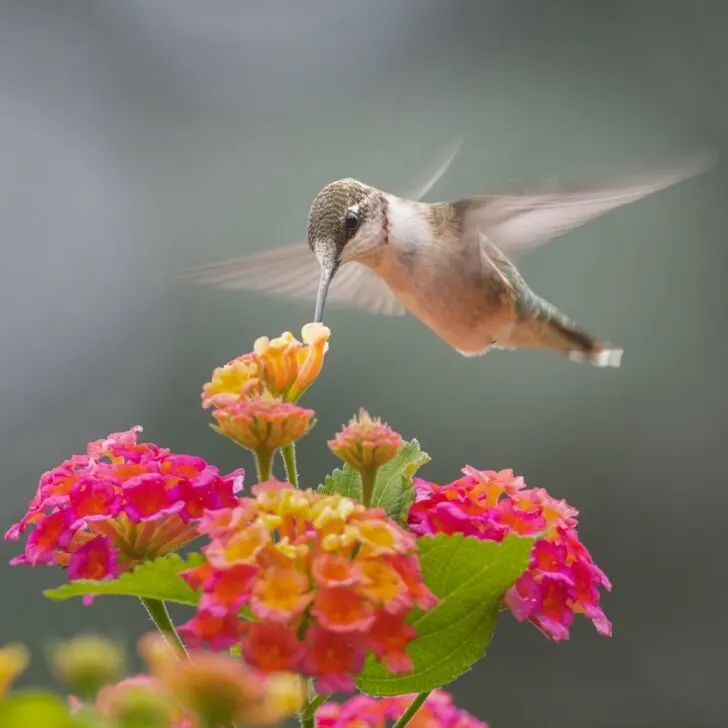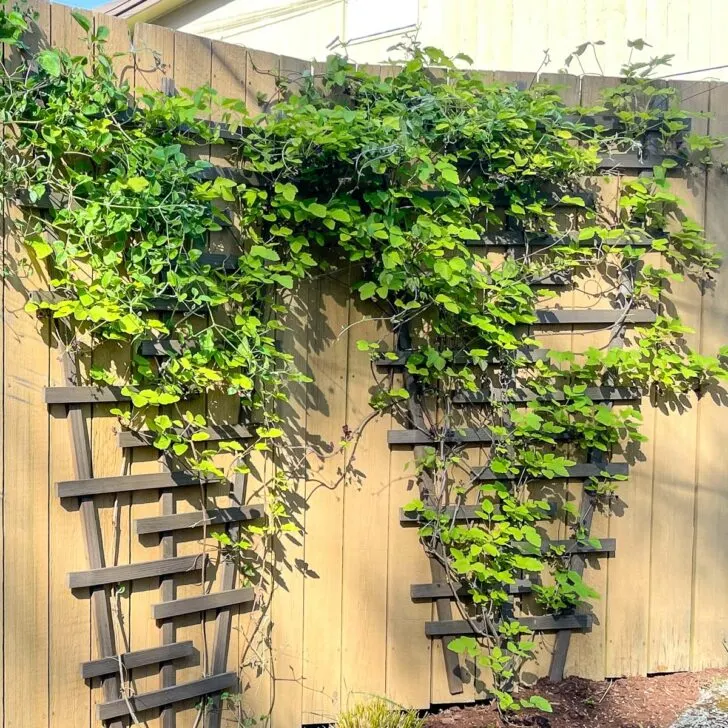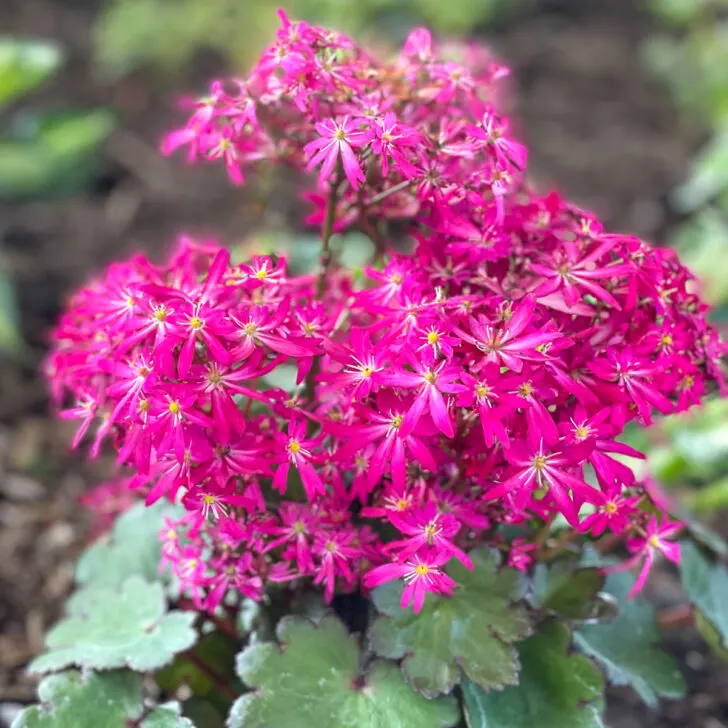Want to learn how to attract butterflies to your garden? This guide will show you which flowers and feeders work best!

Butterflies can add beauty and grace to any outdoor space. Not only are these colorful insects pretty, but they also pollinate plants and maintain a healthy ecosystem in your garden.
By providing the right plants and food sources, you can create a butterfly-friendly garden that will be a haven for these beautiful creatures. Some simple steps you can take to attract butterflies to your garden include planting a variety of flowering plants, providing sources of water, and avoiding the use of pesticides.
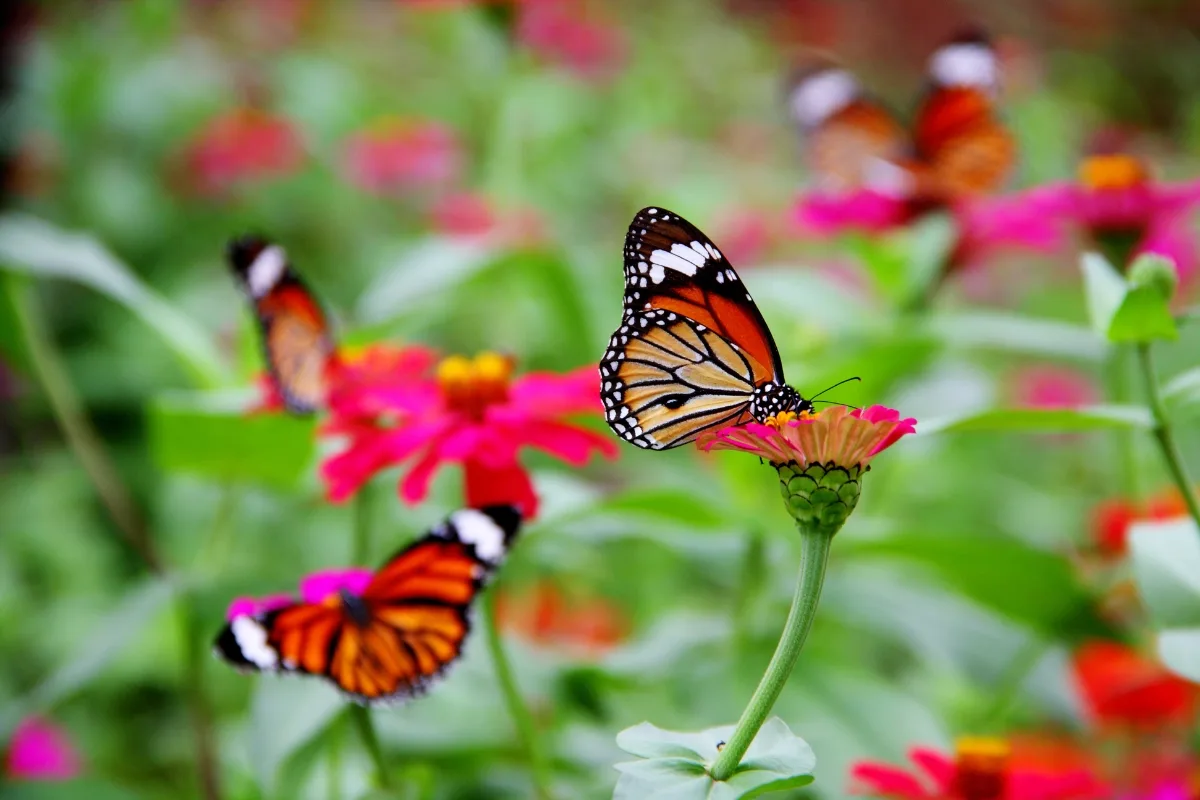
With a little effort, you can create a beautiful and welcoming environment for butterflies to thrive in.
This post contains affiliate links for your convenience. Purchases made through these links may earn me a small commission at no additional cost to you.
Flowers and Plants that Attract Butterflies
Butterflies are attracted to red, orange, yellow, pink and purple blossoms. They are looking for nectar but need flowers that are flat or in clusters so they can perch on them while they feed.
Butterflies prefer a wide range of flowering plants, including many annuals, perennials, and herbs. Some examples of flowers that butterflies like include:
- Zinnias
- Marigolds
- Cosmos
- Sunflowers
- Lantana
- Asters
- Black-eyed Susan
- Purple coneflower
- Butterfly bush
- Milkweed
- Verbena
- Spirea
- Yarrow
In addition to providing nectar from their flowers, many of these plants also provide food for butterfly larvae. Planting a diverse range of flowers can help ensure that butterflies have a constant food supply because something is bound to be in bloom at any given time.

Where to Plant Flowers for Butterflies
Plant your butterfly flowers in an area that will get between 5-6 hours of sunlight each day. Butterflies prefer to be warm and dry when they fly.
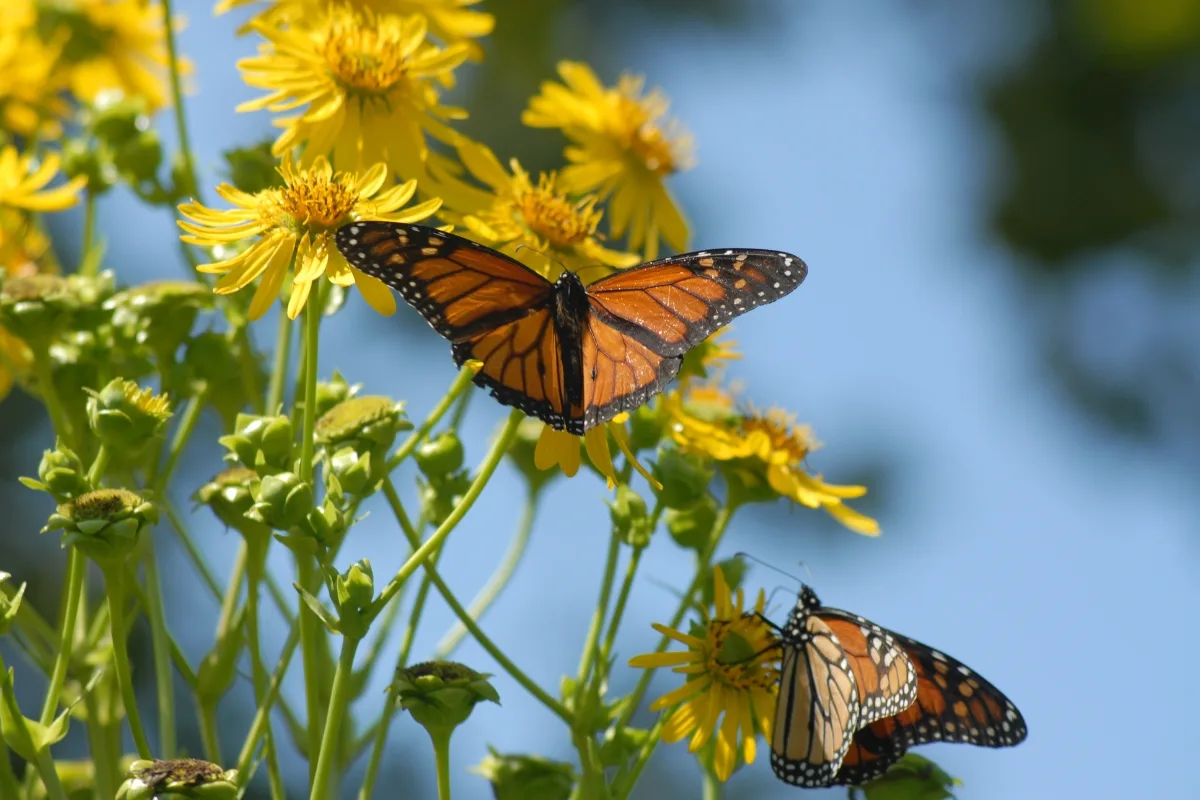
Butterflies don't like the wind because it causes them to have to fight to stay on the flowers. If possible, place your butterfly plants in a calm area or plant larger bushes on the perimeter to protect it from the wind.
Butterfly Feeding Tips
The simplest way to set out food for a butterfly is to cut up a few pieces of fruit and leave them out on a plate. This is common at butterfly houses that are closed off from the elements, but will probably attract other insects in your backyard.

Butterfly Feeder
You can use hummingbird nectar for butterfly feeders. There are butterfly feeders that look similar to a saucer-style hummingbird feeder, but in their preferred yellow color and smaller ports. This one comes with feeding ports and small dishes for fruit to keep your butterflies happy.
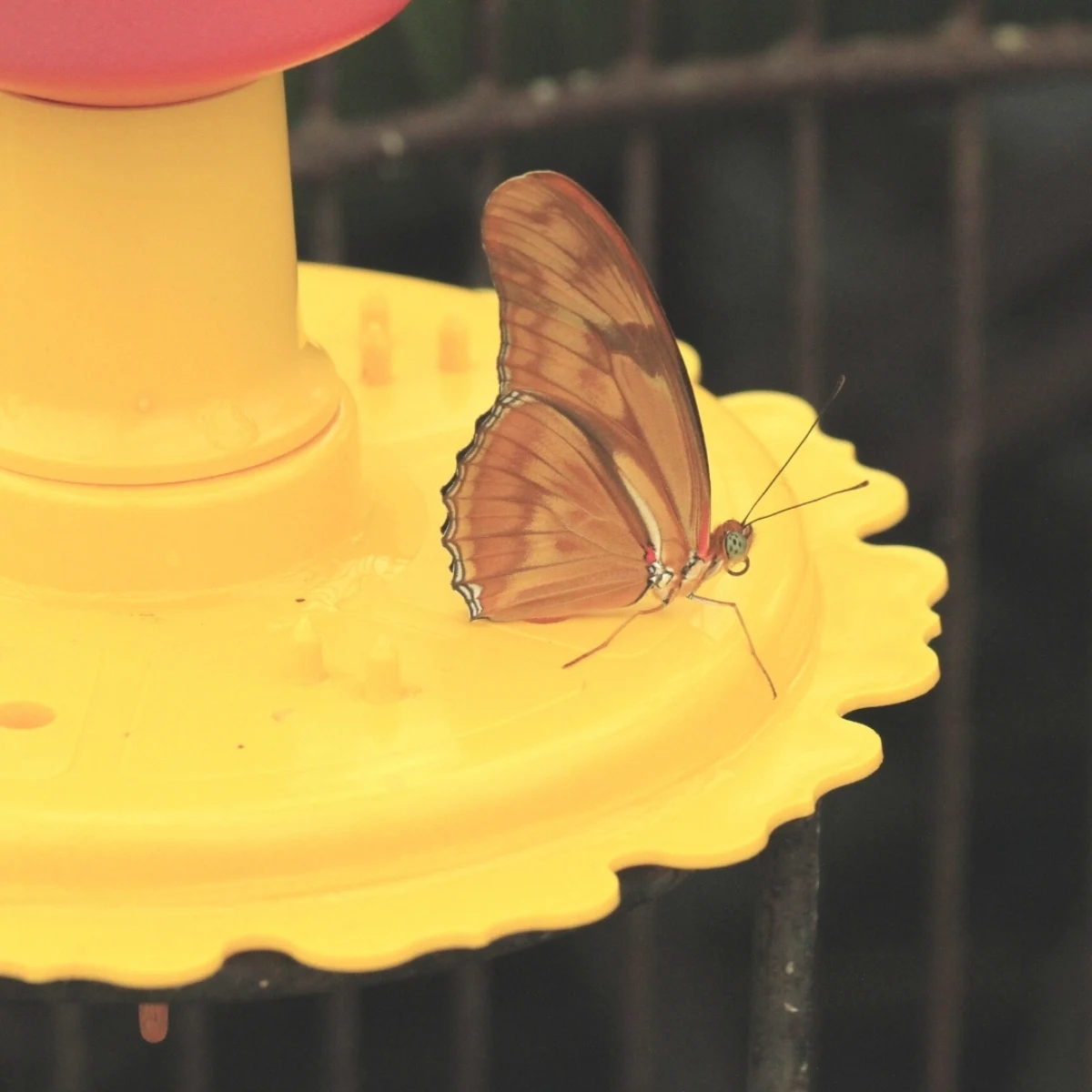
For a simpler solution, just hang a sponge soaked in sugar water in a sunny spot in your garden. The porous texture and flat surface of the sponge makes it easy for the butterflies to grip while they feed.
How to Make Butterfly Nectar
Butterfly nectar is a simple mixture that can be made at home using a few basic ingredients. To make butterfly juice, you will need:
- 1 part water
- 1 part granulated white sugar
To make the nectar, simply mix the water and sugar together in a small saucepan and heat over medium heat, stirring constantly, until the sugar has dissolved. Once the sugar has dissolved, remove the pan from the heat and let the mixture cool.
It is important to replace the nectar every few days, as it can spoil and become moldy if left out for too long. I like to mix up a big batch and store it in the fridge, so I can replenish both the hummingbird and butterfly feeders as needed.
Provide Water for Butterflies
Butterflies prefer to drink from very shallow puddles, preferably with sand or soil underneath. Using colored sand in their favorite color may draw them in easier.

You can make one of these puddlers with a simple pie tin! Bury the pie tin in your garden, and add colored sand to the bottom. Place flat rocks sticking up from the water line so butterflies will be able to land on them and dry off. Refresh the water as necessary, adding a pinch of salt to provide minerals for the butterflies.
You can also find beautiful puddler stones with a shallow water areas built into a ceramic disk. Surround it with the butterfly plants listed above, and you'll have the perfect refuge for these delicate creatures.
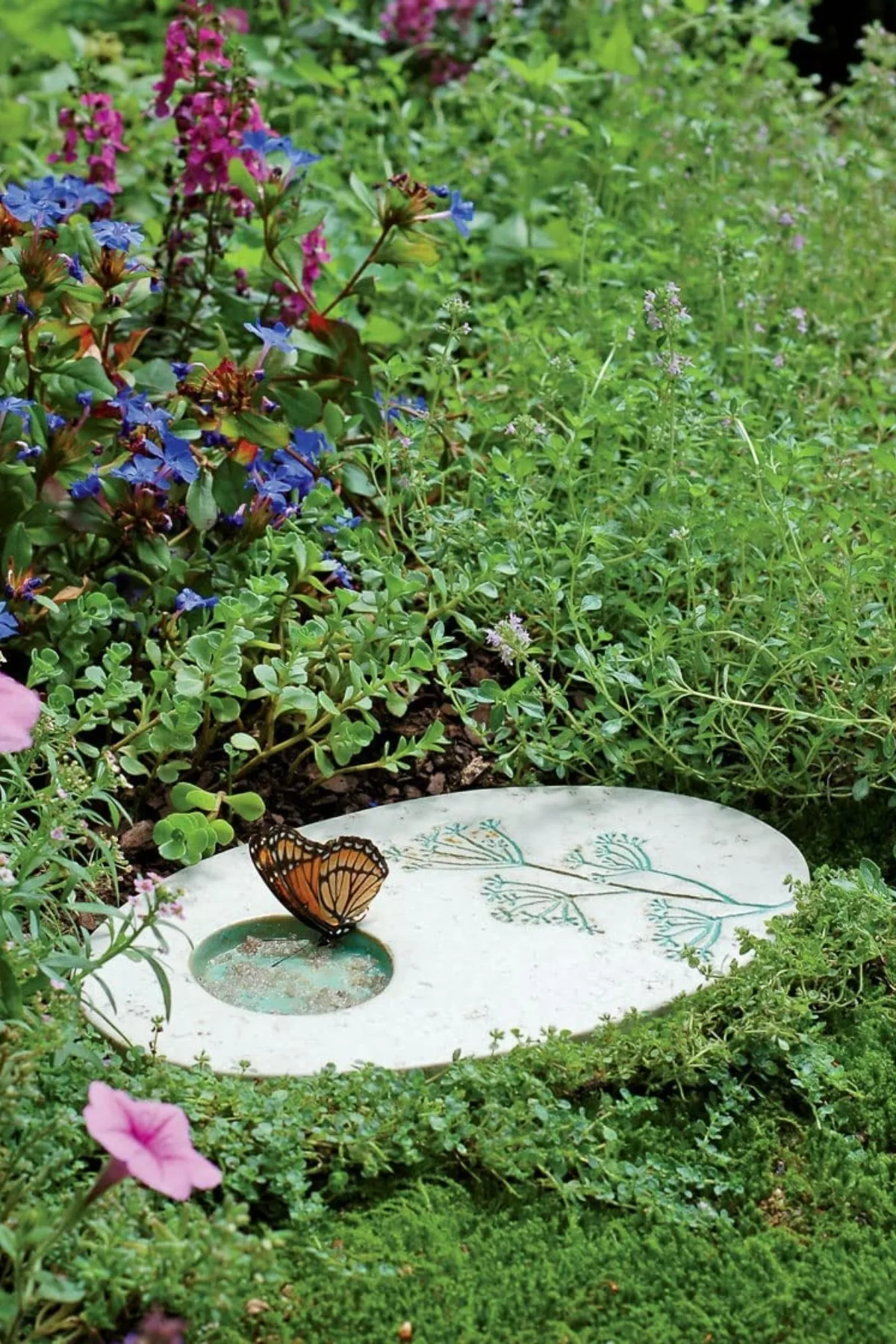
Other Considerations
Avoid using pesticides in your garden. Pesticides are one of the reasons why butterfly populations such as the Monarch butterfly are dwindling. There are lots of different ways to garden organically and not hurt the butterflies that you want to stop by.
Attracting butterflies to your garden isn't difficult once you have the right elements in place. After you're done, you'll love being able to sit outside and watch these beautiful insects flit around the garden.
Check out these other gardening ideas!

